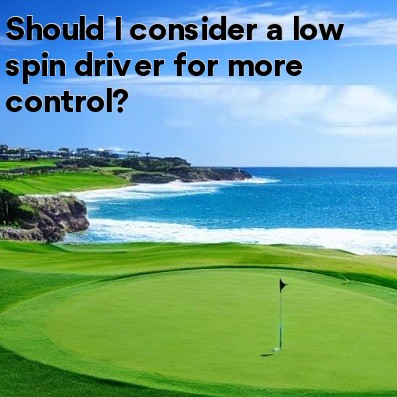
In golf, Should I consider a low spin driver for more control?
Golfers are always looking for ways to improve their control and accuracy off the tee. One factor that can greatly impact these aspects is the amount of spin a golf ball generates when hit with a driver. While some players benefit from high spin rates, there is a growing demand for low spin drivers due to the potential for increased control and distance.
When a golf ball is hit with a driver, several factors come into play that determine the amount of spin it generates. One of the key factors is the design and characteristics of the driver itself. Low spin drivers are typically designed with a larger clubhead and a lower center of gravity. This design promotes a more penetrating ball flight and reduces the amount of spin generated. The result is a flatter trajectory that can help golfers maintain control and accuracy.
One of the main benefits of using a low spin driver is increased accuracy. When a golf ball spins excessively, it can be more challenging to control its flight path. High spin can cause the ball to curve more, making it difficult to accurately predict where it will land. By using a low spin driver, golfers can minimize the chances of the ball spinning out of control and straying off-line. This can lead to more fairways hit and ultimately more scoring opportunities.
Another advantage of low spin drivers is the potential for increased distance. When a golf ball generates less spin, it experiences less drag in the air, allowing it to travel farther. The reduced spin creates a more efficient ball flight, with less resistance hindering its progress. Golfers who struggle with distance off the tee may benefit from switching to a low spin driver, as it can help maximize their carry and overall yardage.
It's important to note that low spin drivers may not be suitable for every golfer. Golfers with slower swing speeds may not achieve optimal launch conditions with a low spin driver, as they may struggle to generate enough spin to keep the ball in the air and maximize carry distance. Additionally, golfers who already experience relatively low spin rates with their current driver may not see significant improvements by switching to a low spin model.
- Low spin drivers can provide increased control and accuracy off the tee.
- A flatter trajectory helps golfers maintain control and accuracy.
- Low spin drivers may result in more fairways hit and scoring opportunities.
- The reduced spin of a low spin driver can lead to increased distance off the tee.
- Golfers with slower swing speeds may not benefit from low spin drivers.
- Golfers with already low spin rates may not see significant improvements.
In conclusion, while low spin drivers offer potential benefits in terms of increased control and distance, it's essential for golfers to consider their individual swing characteristics and current spin rates before making a switch. Consulting with a professional and trying out different drivers can help determine if a low spin driver is the right choice for improving control and overall performance off the tee.





